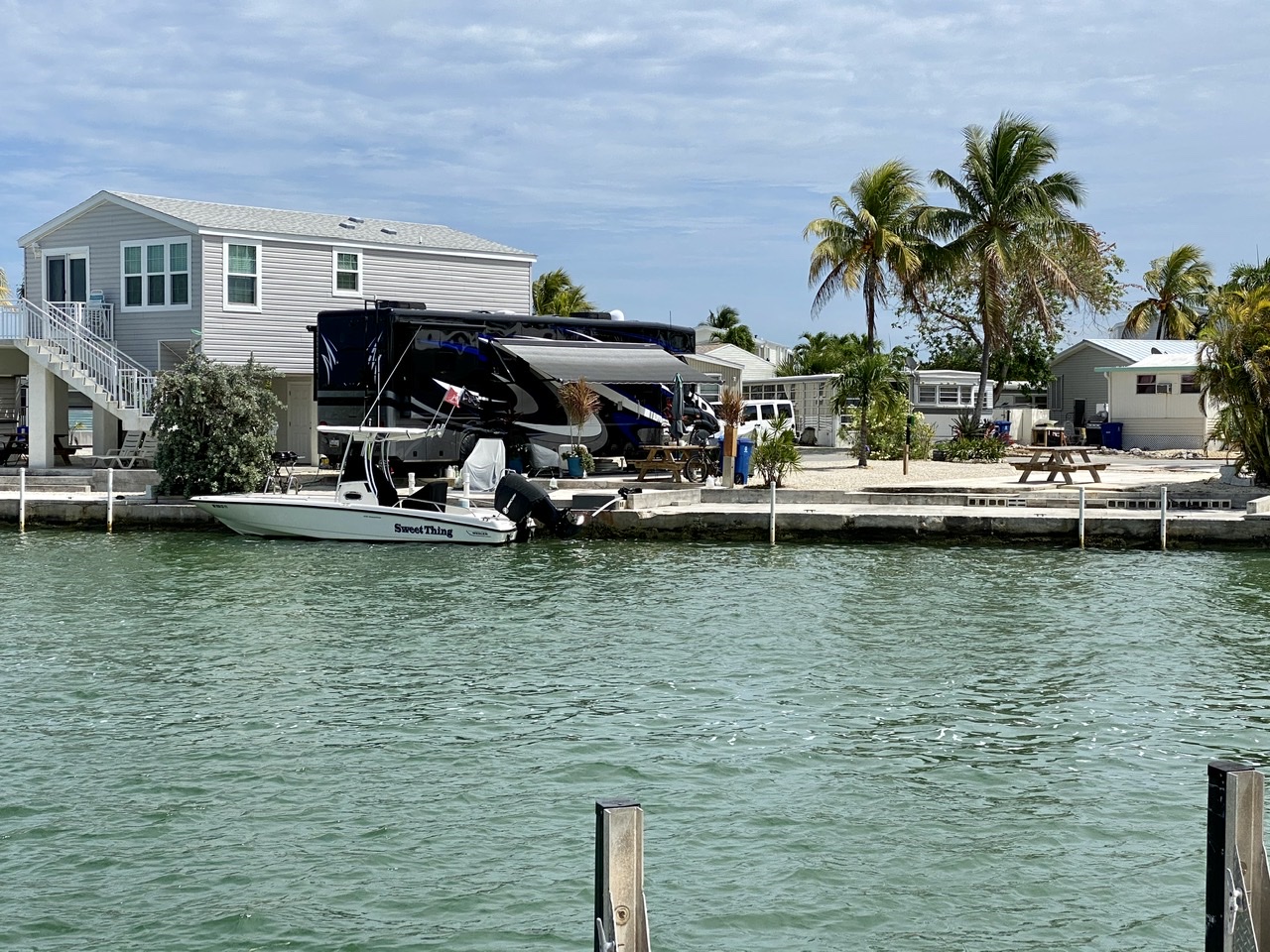We drove 243 miles from Dease Lake to the Bear River RV Park in Stewart, BC. Along the way, we stopped at the Bell II Lodge for lunch with Mitch and Kate and to get our scavenger hunt photo of where we ate on the Cassiar Highway. I get extra points in the competition since there were 4 of us in this crazy photo. Mitch took the point after lunch. This allowed him to radio back to us about a black bear along the road. Unfortunately, we could not get stopped in time to get a good picture. The bear took off up into the wooded bank on the side of the road, and we had traffic behind us with nowhere to pull over so we could not get any more photos of this particular bear. We didn’t learn until later than Brian and Diane did not have any traffic behind them so they were able to wait for the bear to come back down the hill. They were able to get a few nice pictures of the black bear. We also stopped for some photos of the Bear River Glacier that came down the mountain just on the other side of the river that ran along the road.
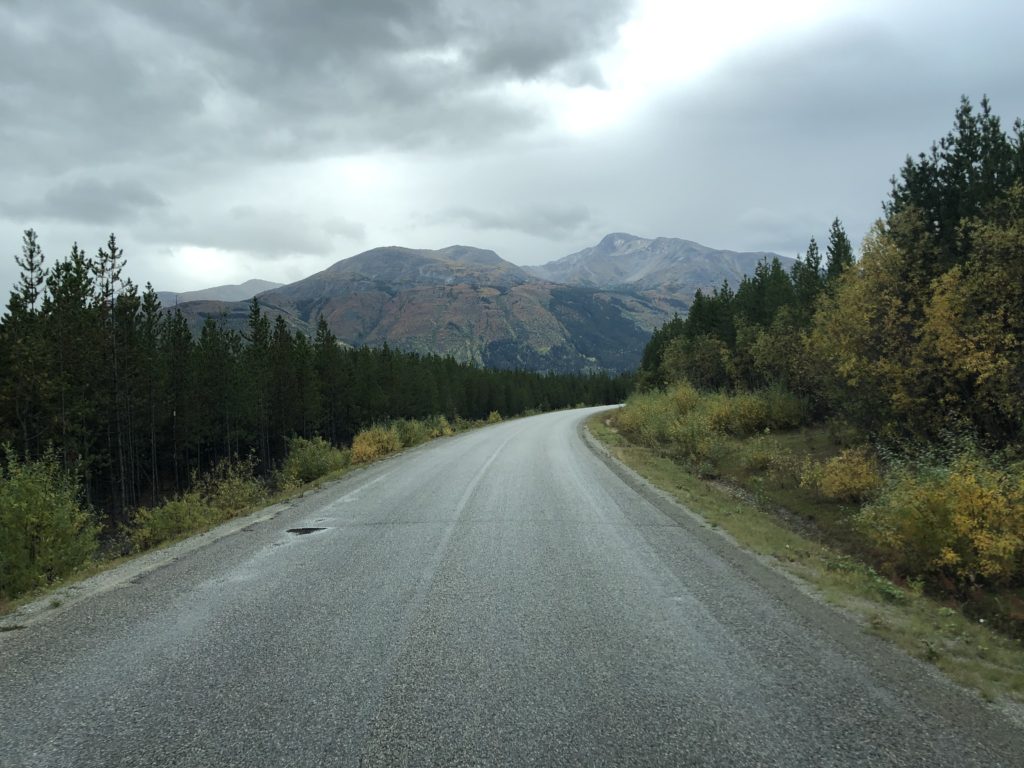
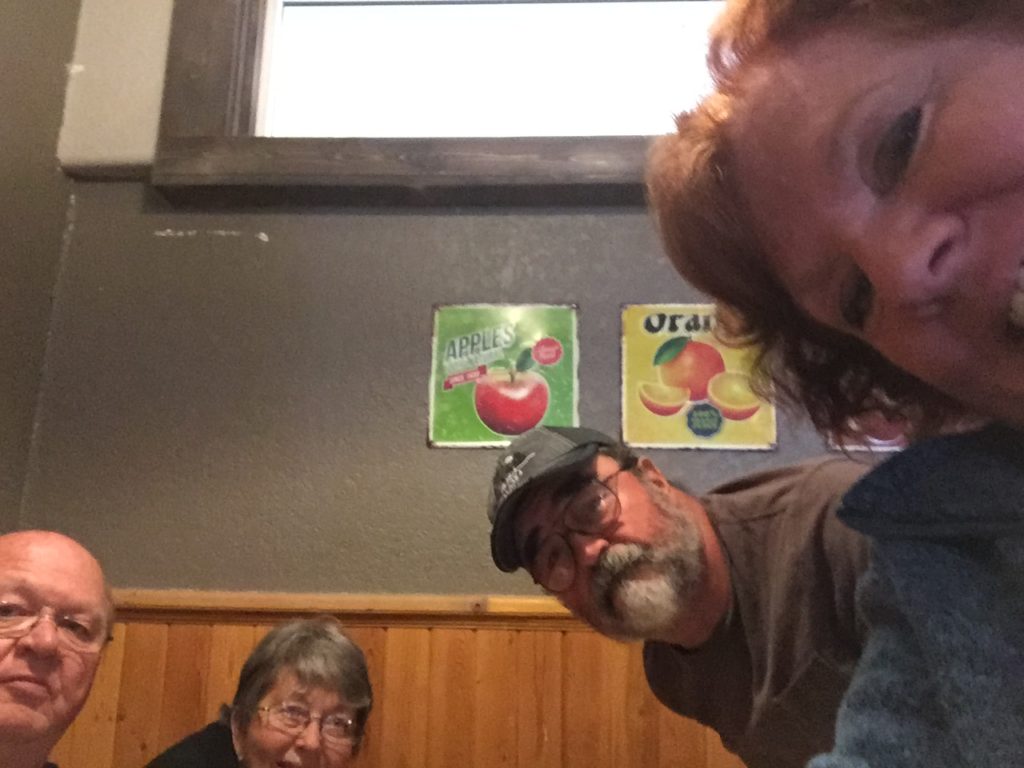
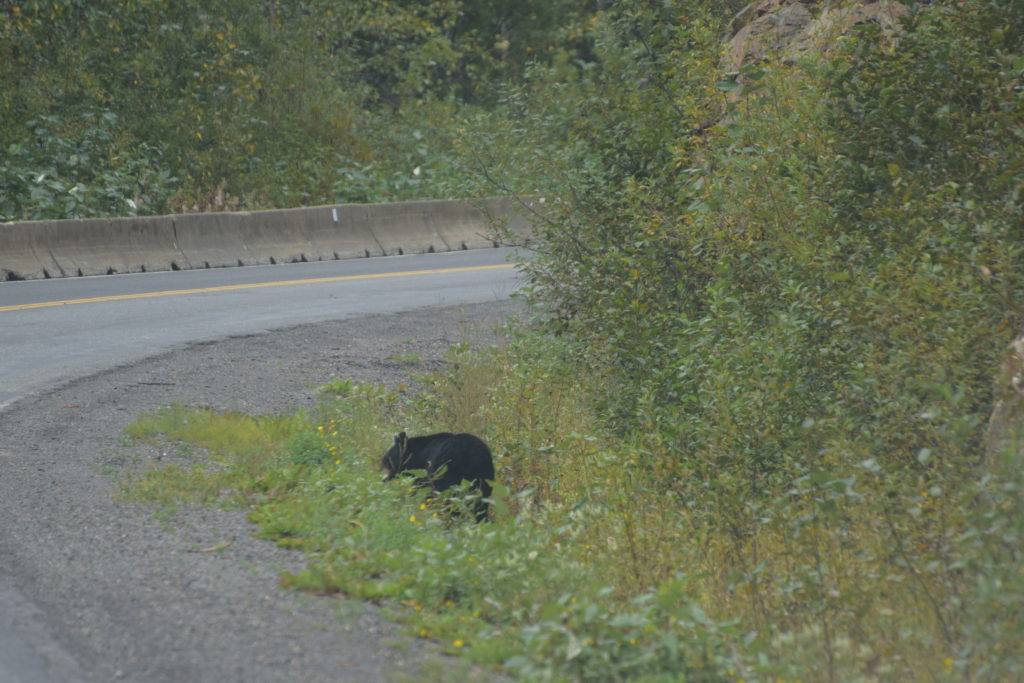
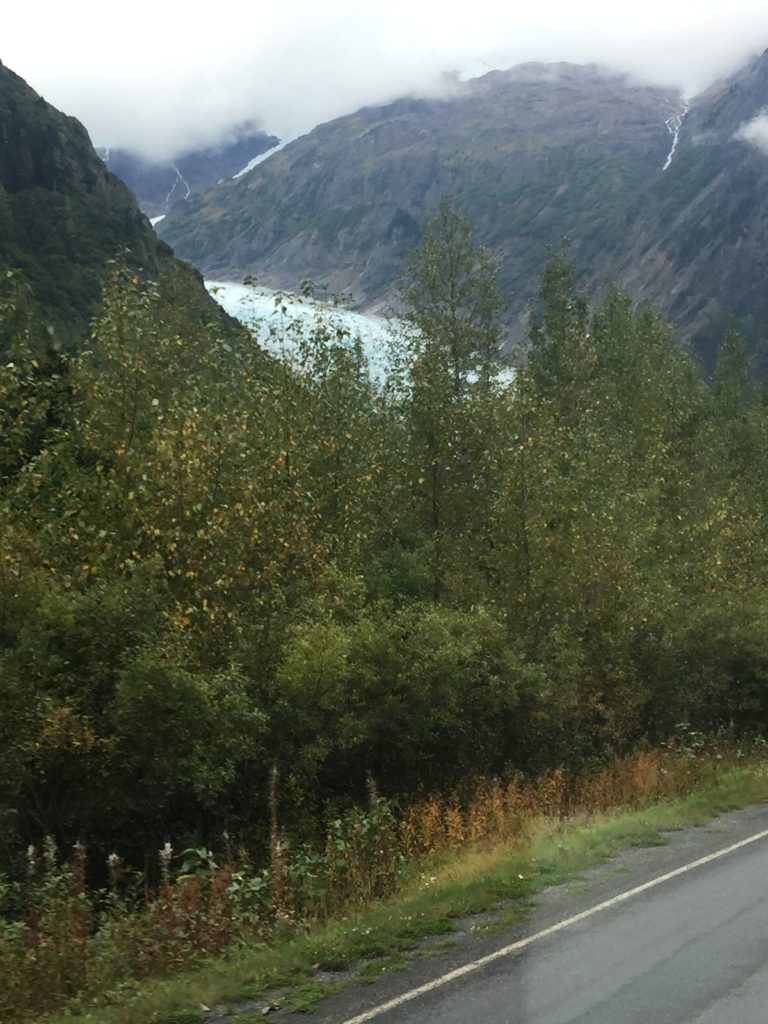
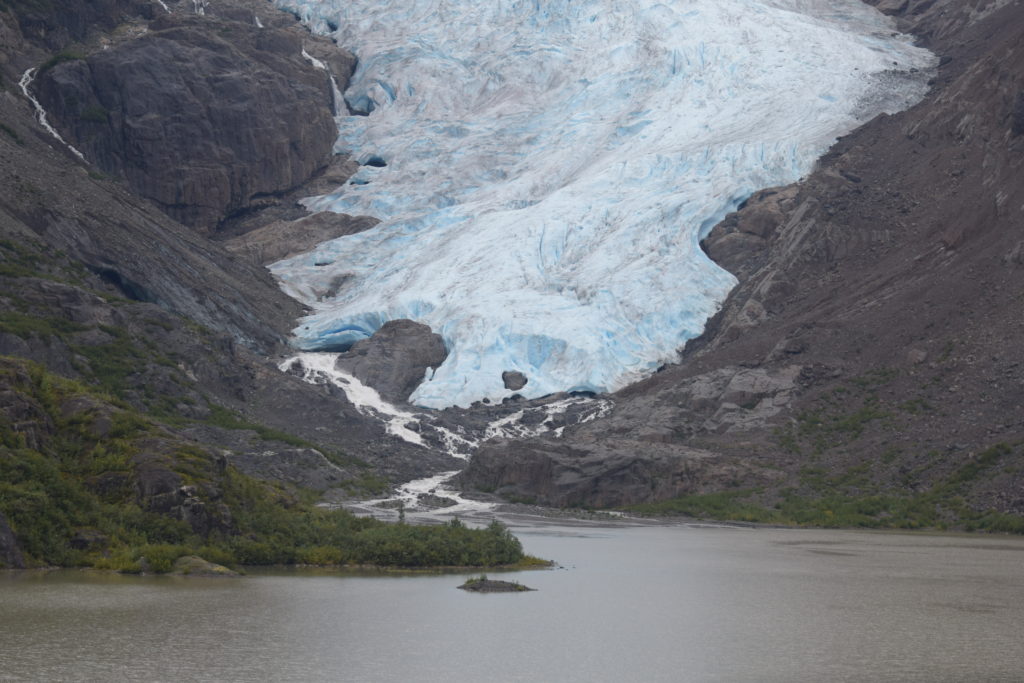
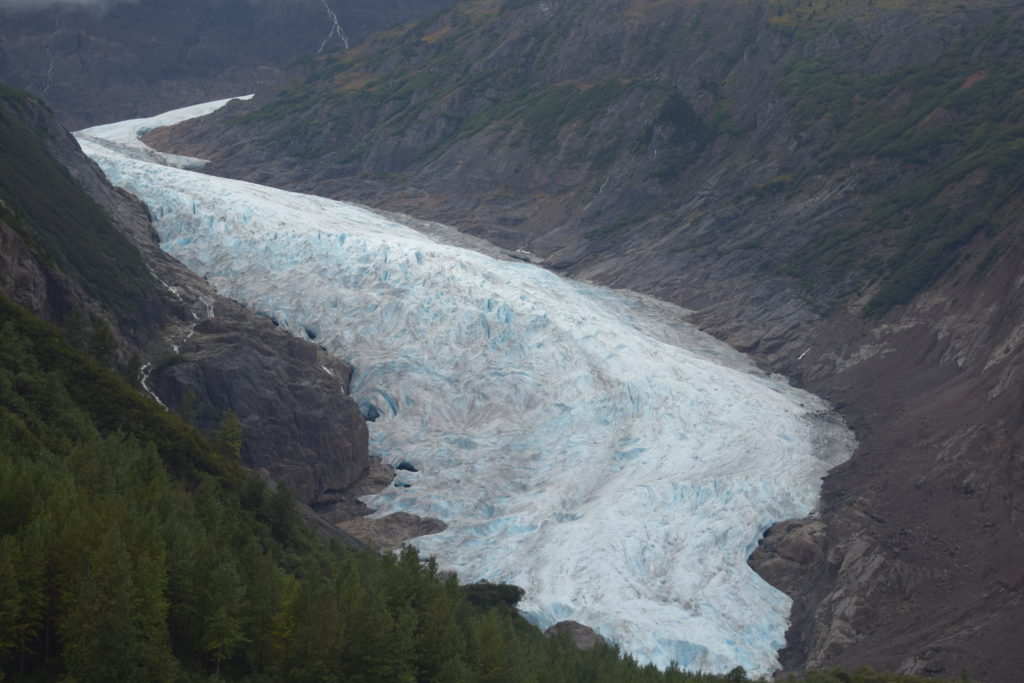
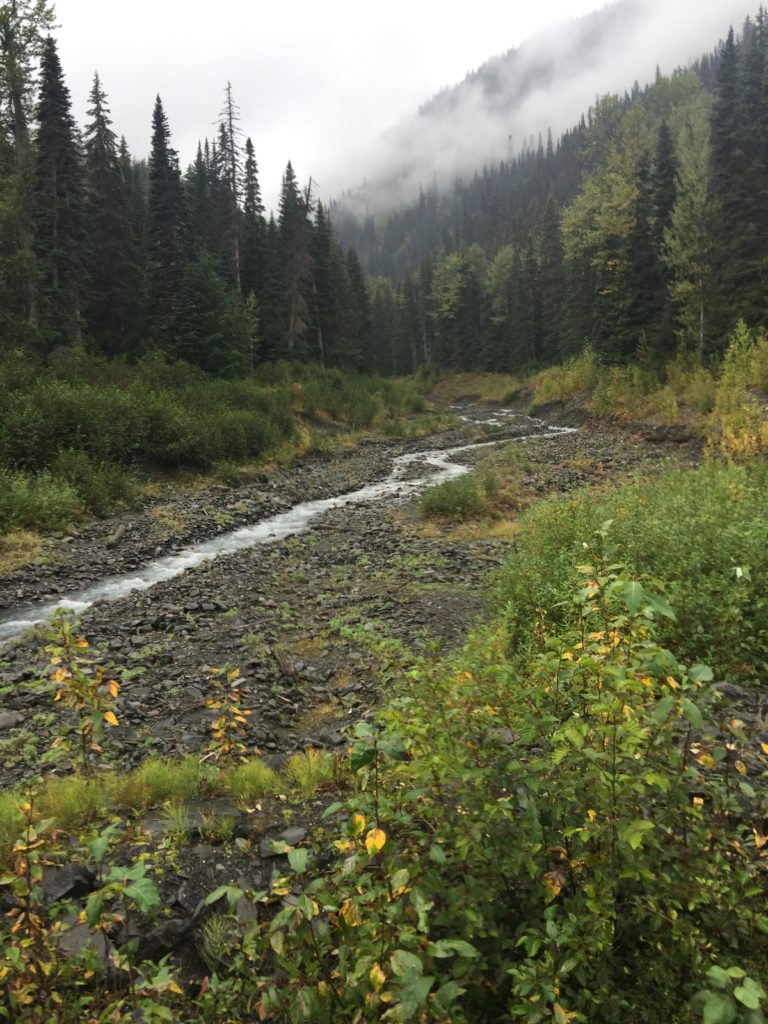
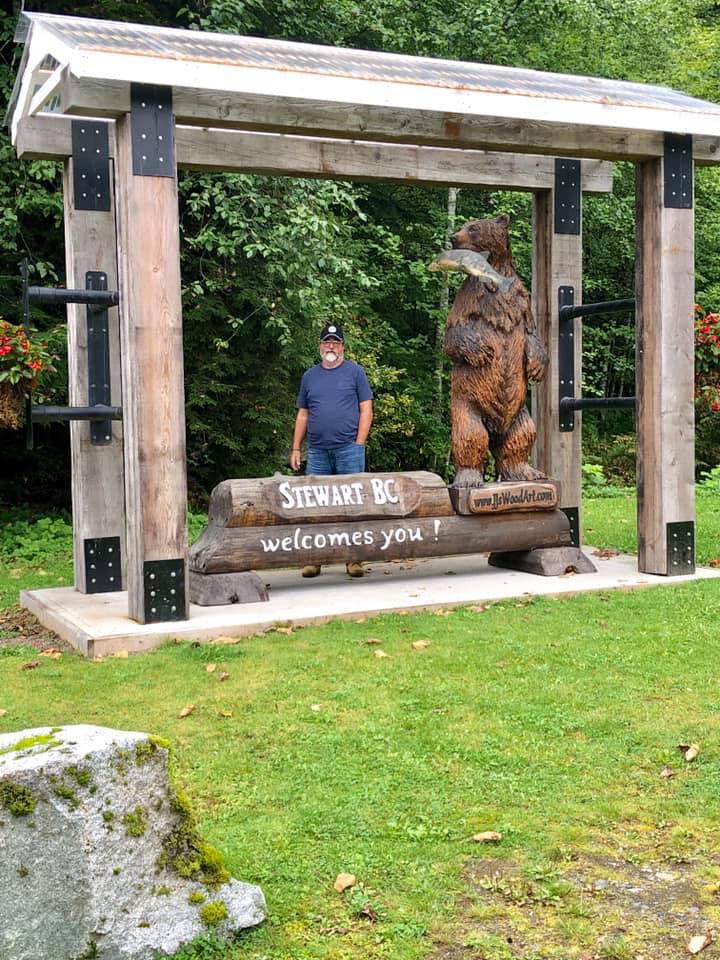
As soon as we set up camp and unhooked, we headed to the Fish Creek Wildlife Center in Hyder, Alaska. We did not need to go through customs to get into Hyder, Alaska; however, we he did need to show our passports to get back into Canada. The first thing you notice as you get close to the Wildlife Center is the smell. We found the source of the smell with the stream loaded with several species of dead and dying salmon. While it was sad to see the dying salmon, the dead salmon here did not bother me as much as the dead salmon at the Solomon Gulch Fish Hatchery we had visited earlier in our trip. At the hatchery, the fish were dying before they could reproduce as only a very few made it up the steam where there was nowhere to reproduce because of the hydro-electric plant. At the hatchery, the remaining fish could not make it up the ladder to be processed in the hatchery. Many fish just struggled to get upstream with nowhere to go.
On Fish Creek, there were quite a few salmon still spawning with the birds putting up a ruckus as they feasted on the salmon eggs. I assume the eggs were so plentiful the birds were not eating or picking at the dead salmon. We saw quite a few bald eagles on the drive to the Center, but we were never lucky enough to spot any bears from the viewing platform at the Center. We always seem to arrive a few minutes too late with everyone telling us they just saw some bears but they had just left. We did see several black bears including a sow with two cubs during our drives near the Center, but never any browns/grizzlies and never anything from the viewing platform, even though we went back several times.
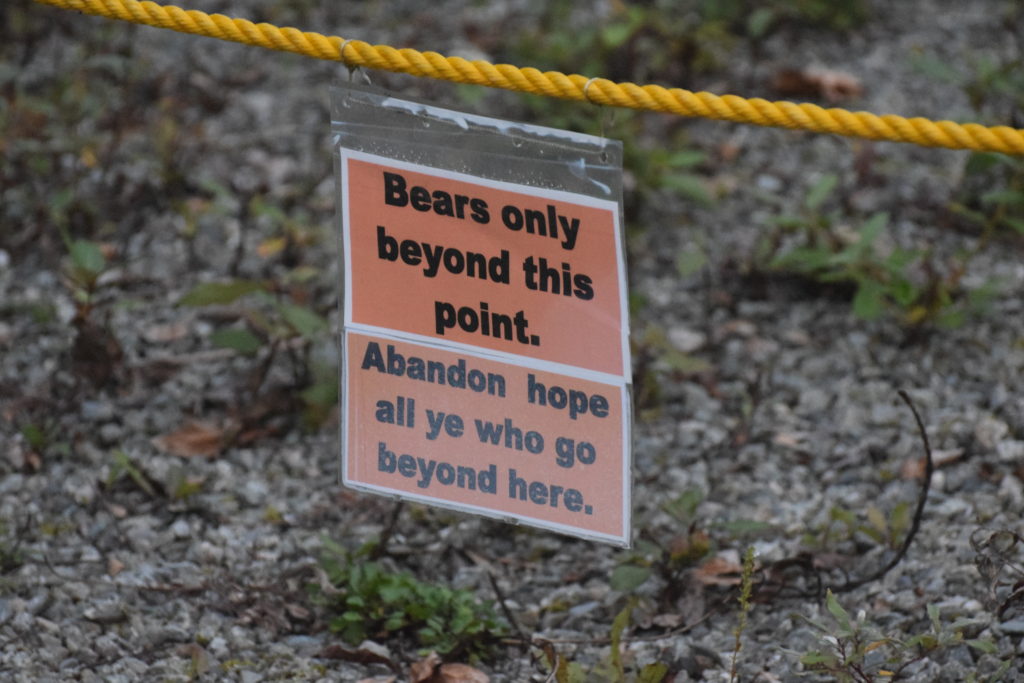
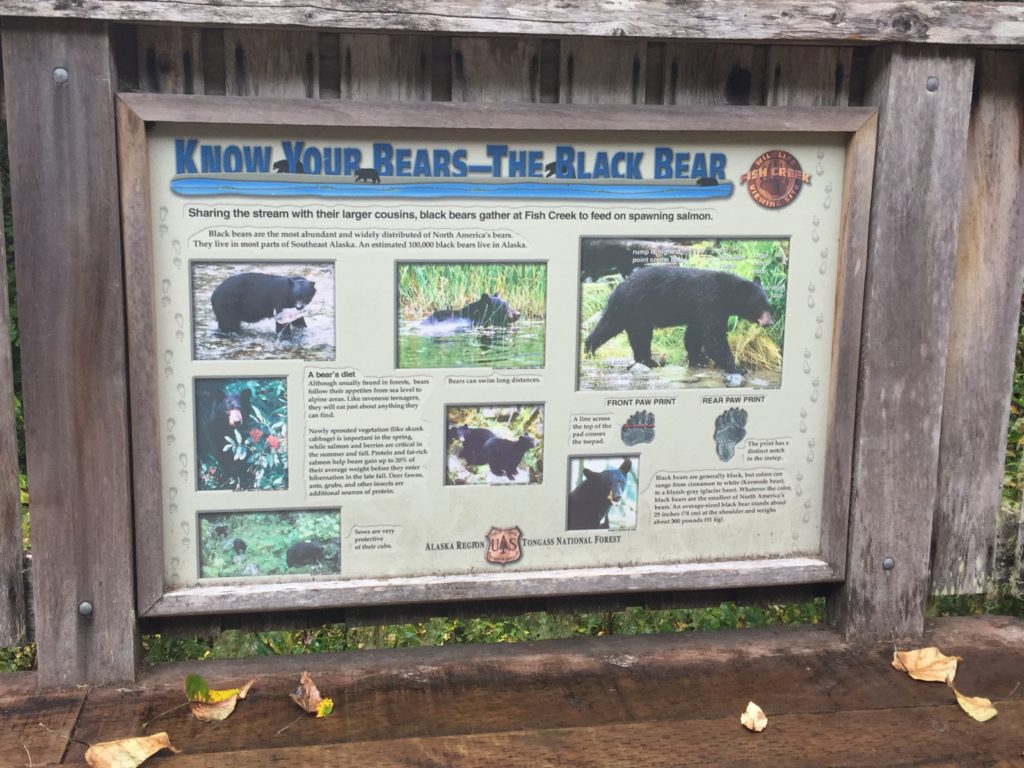
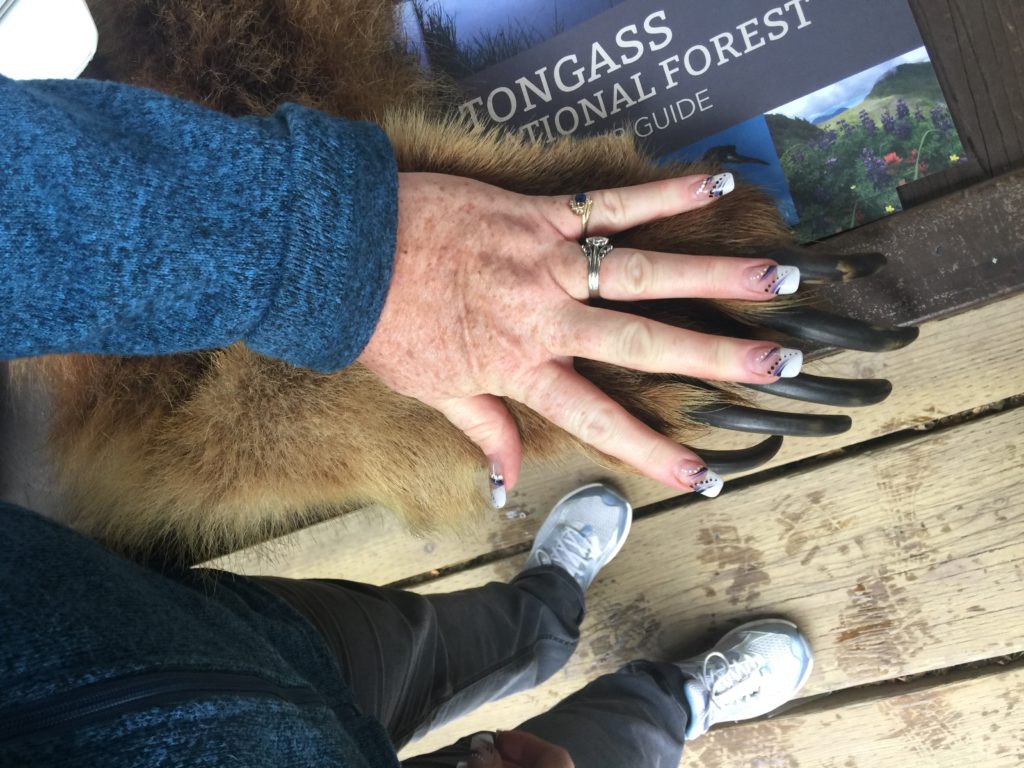
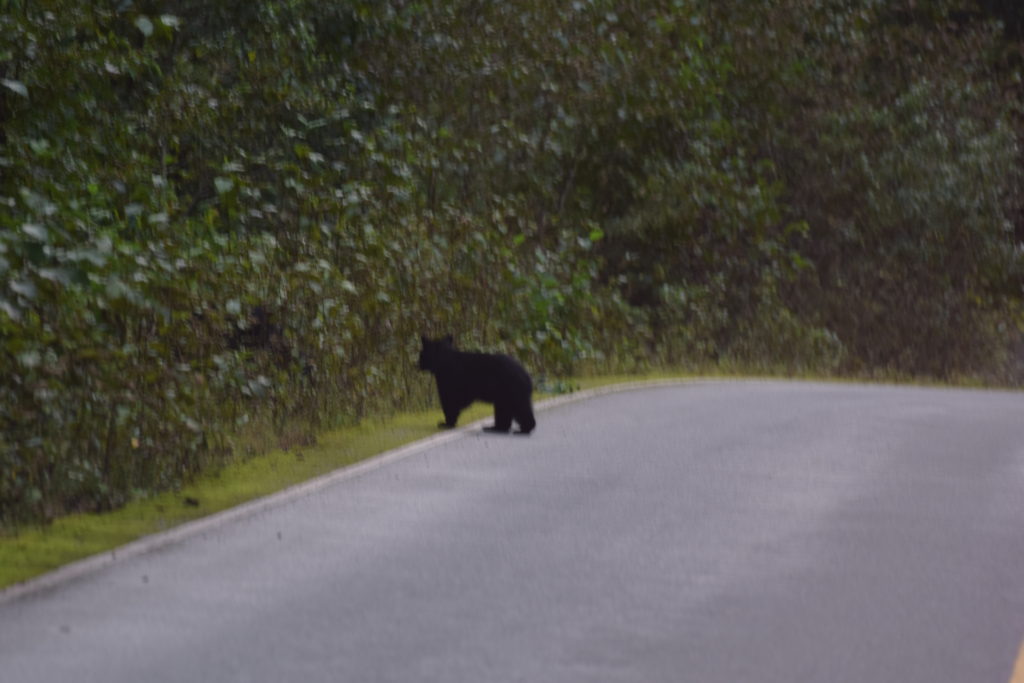
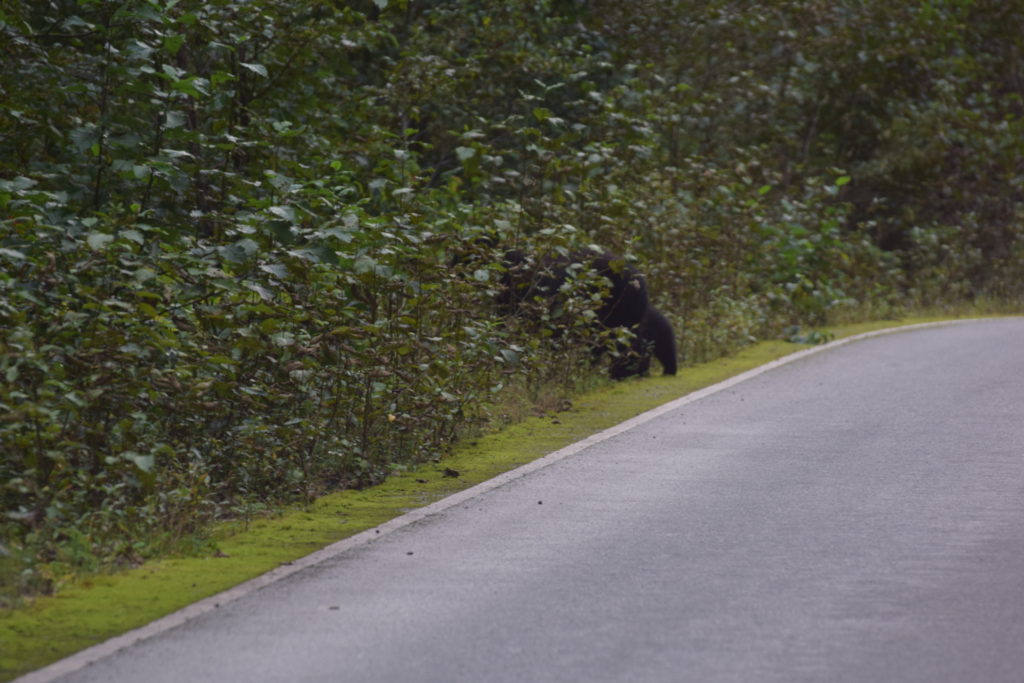
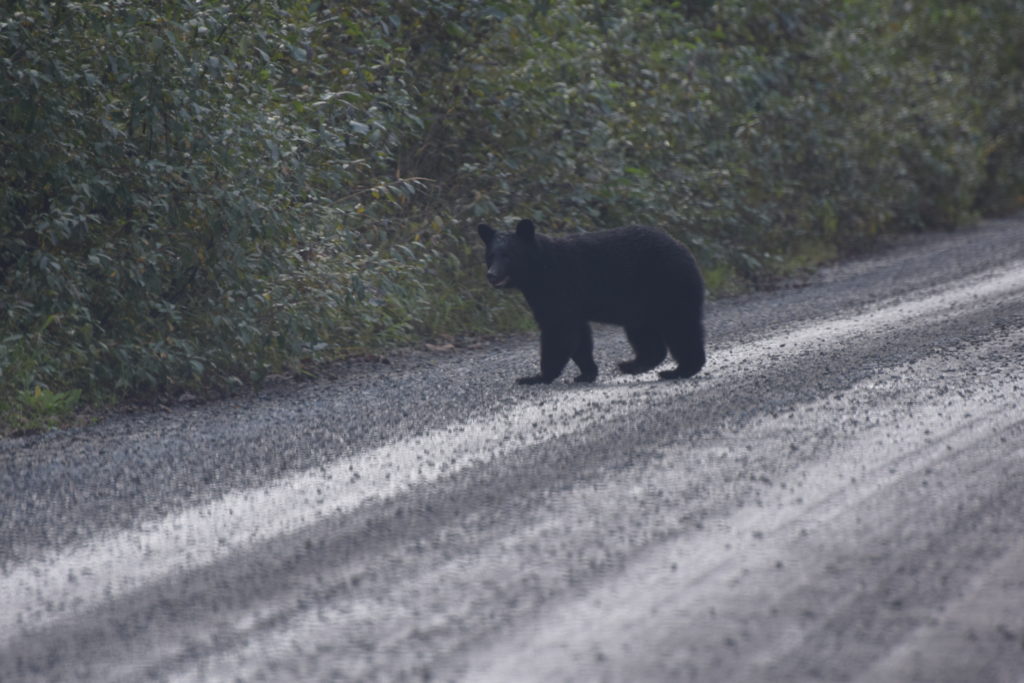
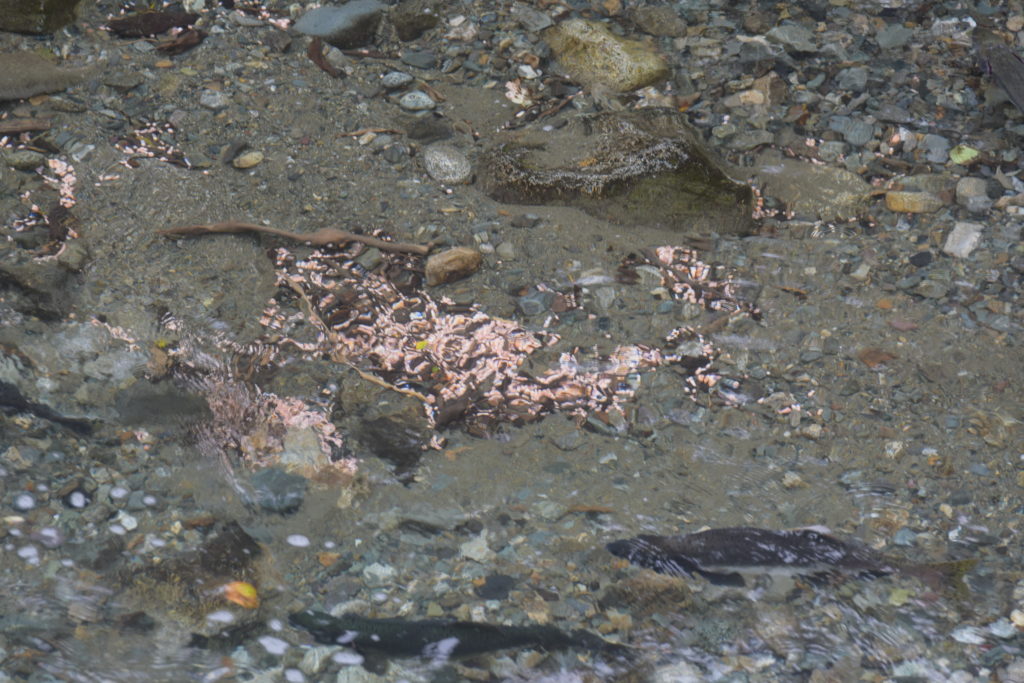
While investigating the area, we went out to the marina located at the end of a long causeway. Near the marina, Randy spotted a bald eagle and an immature eagle on some of the old pilings. As we were heading back from the marina, we noticed a sign explaining all of the old piers in the tidal flats. According to the sign, Daniel and Andrew Lindeborg arrived in the area in 1903 when they staked a homestead on 72 acres of dry land above the high tide line. Later arrivals were forced to establish a small camp over the tidal flats built entirely on pilings. When the first gold boom period began on the US side of the Portland Canal in 1910, prospectors, miners and businessmen found a town built on pilings. Early residents and the Lindeborg’s called the area Portland City. When residents applied for a US Post Office in 1914, the name was rejected due to many other similar named cities. Residents renamed it Hyder, after a mining engineer and geologist who had visited the prior year and reported very positive results. The second “boom” started in late 1918 at the end of WWI and continued through 1934 when the price of gold was fixed at $35 per ounce. This fixed price caused many small gold mining operations all over the world to shut down, including those in Hyder. In 1929, Hyder’s heyday the population reached 254 residents. By 1936, the population was less than 50 and by 1940, the entire piled area of Hyder had been abandoned. Today, the population is probably close to the 87 as reported in the 2010 census.
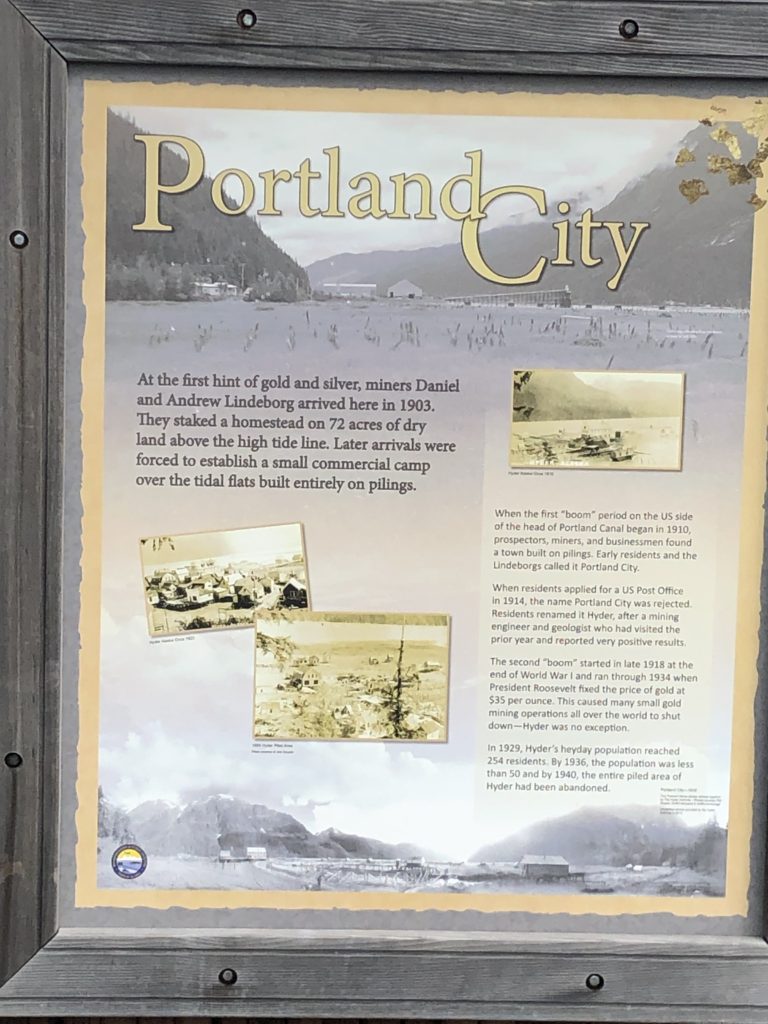
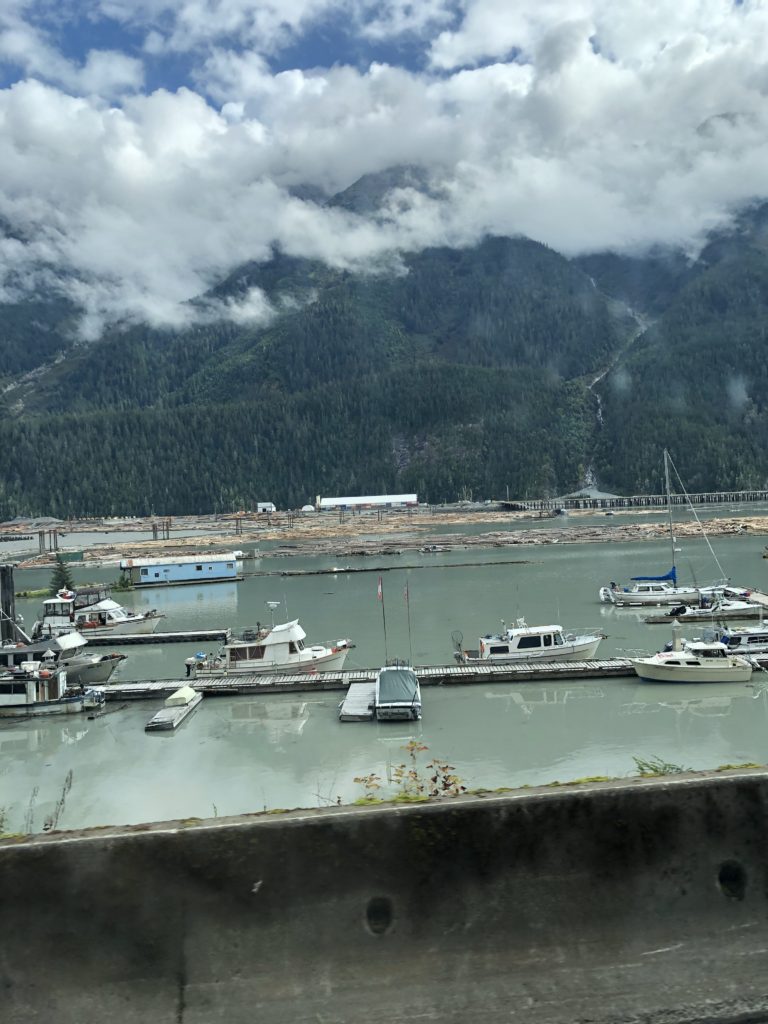
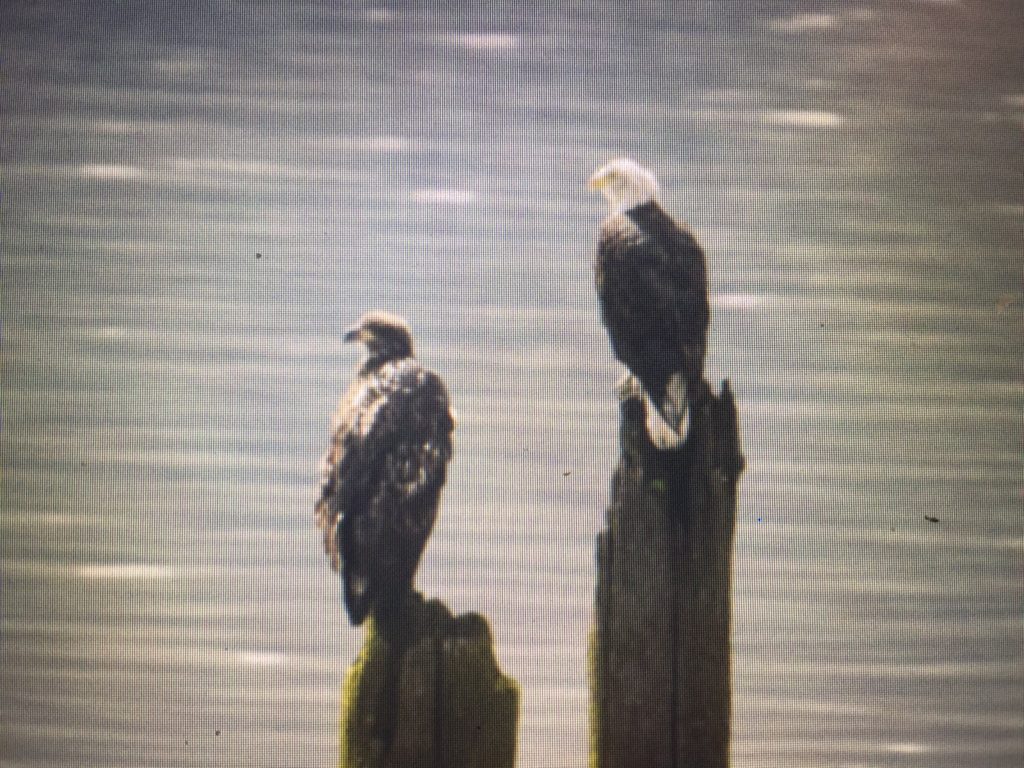
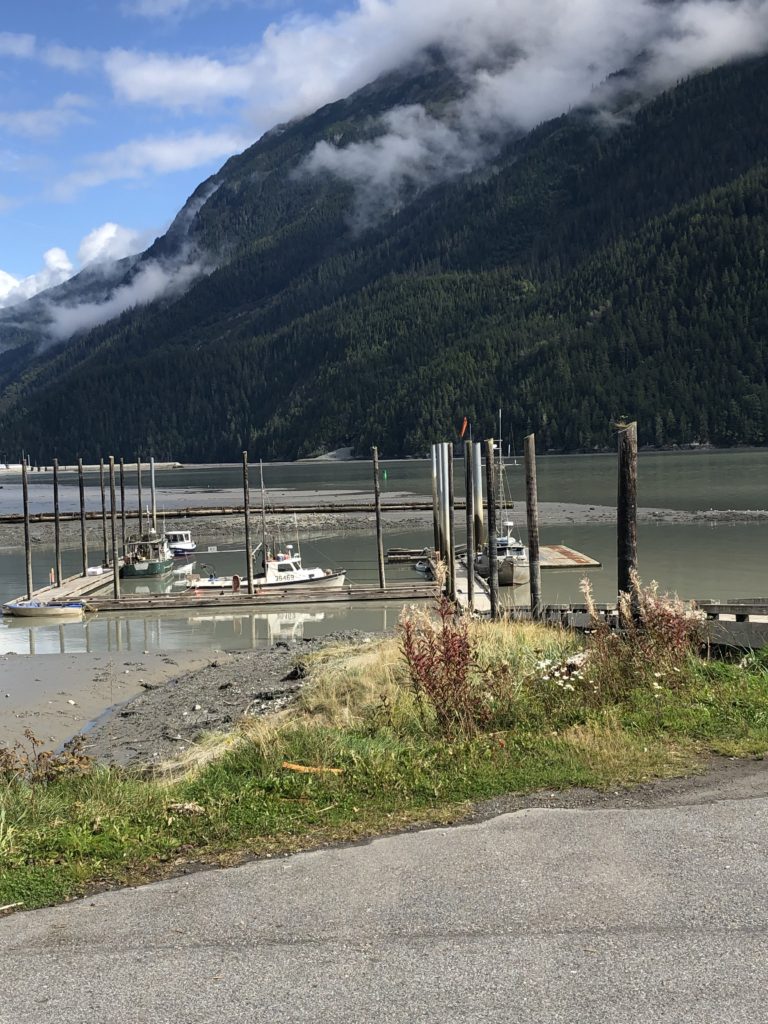
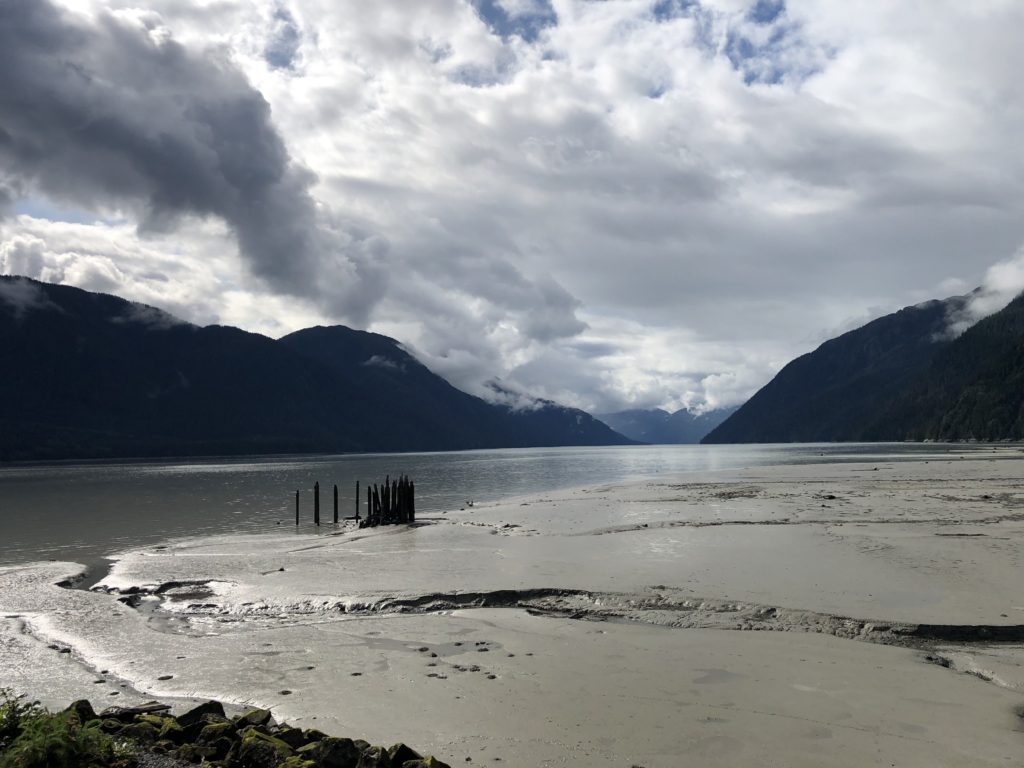
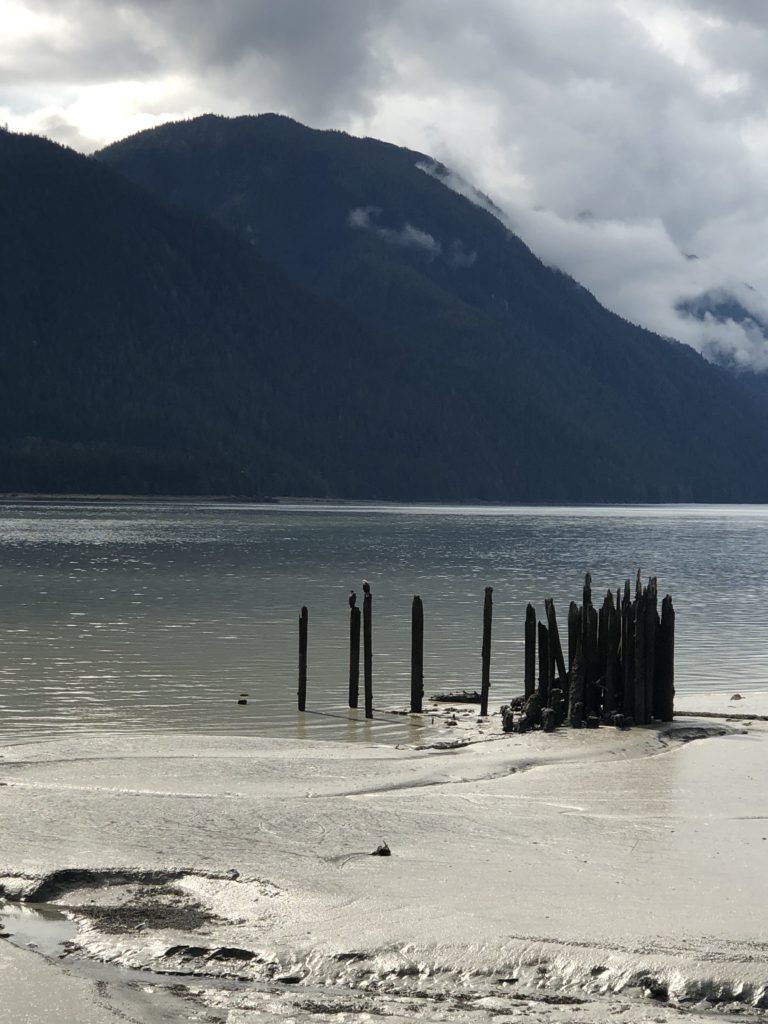
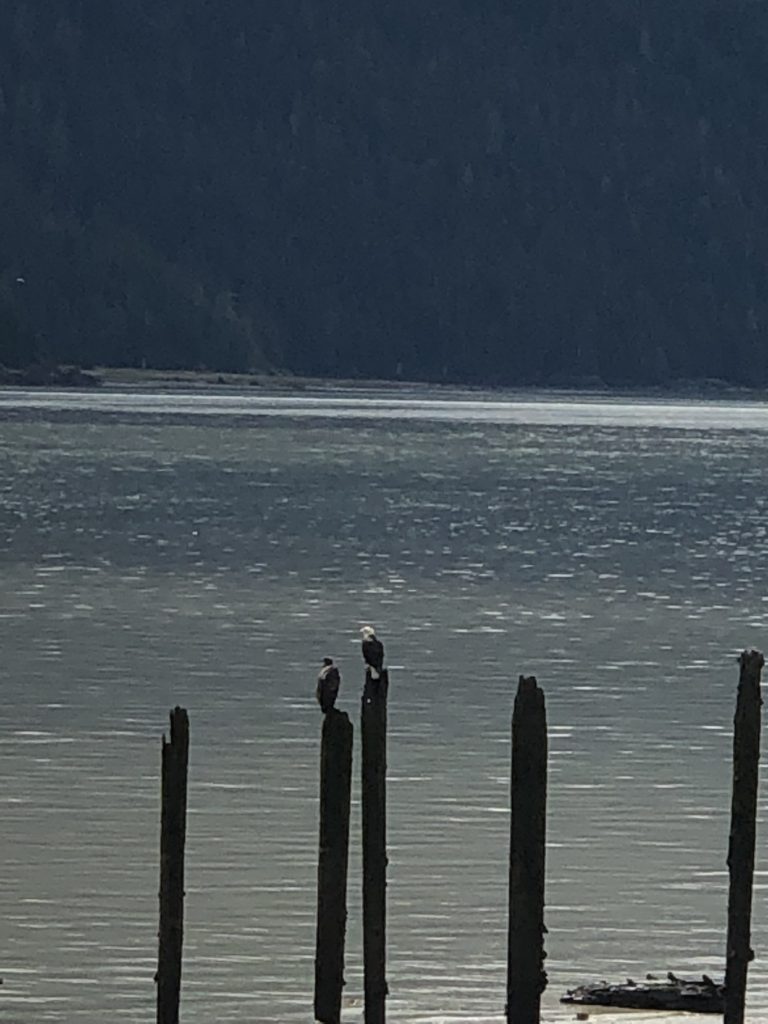
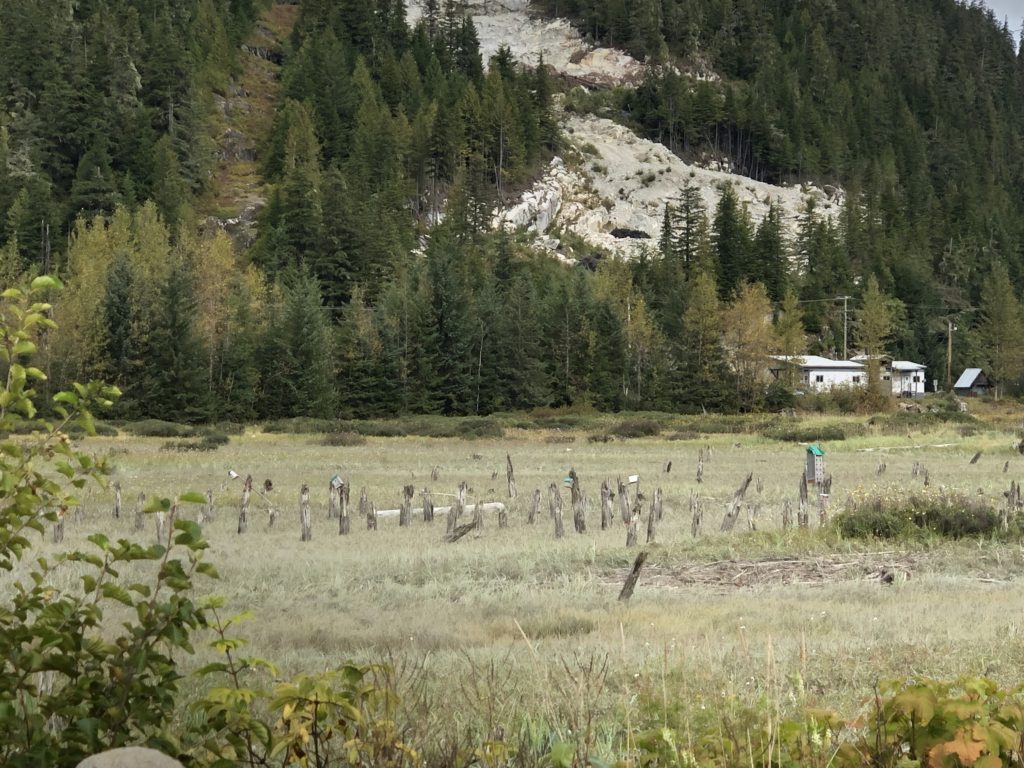
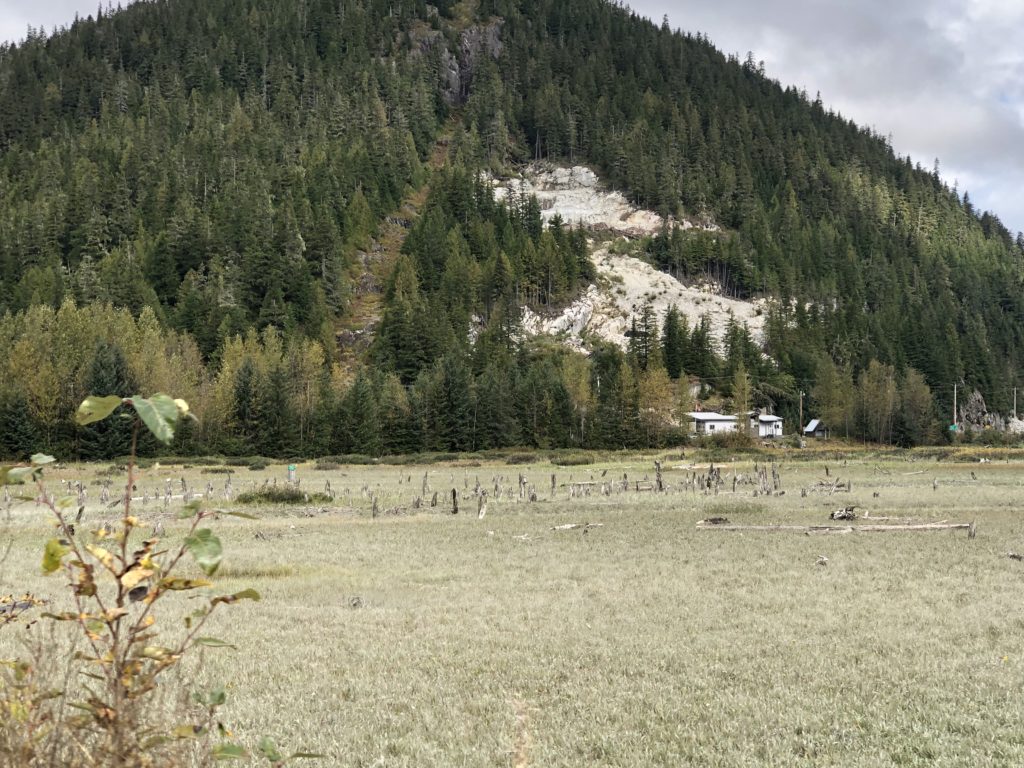
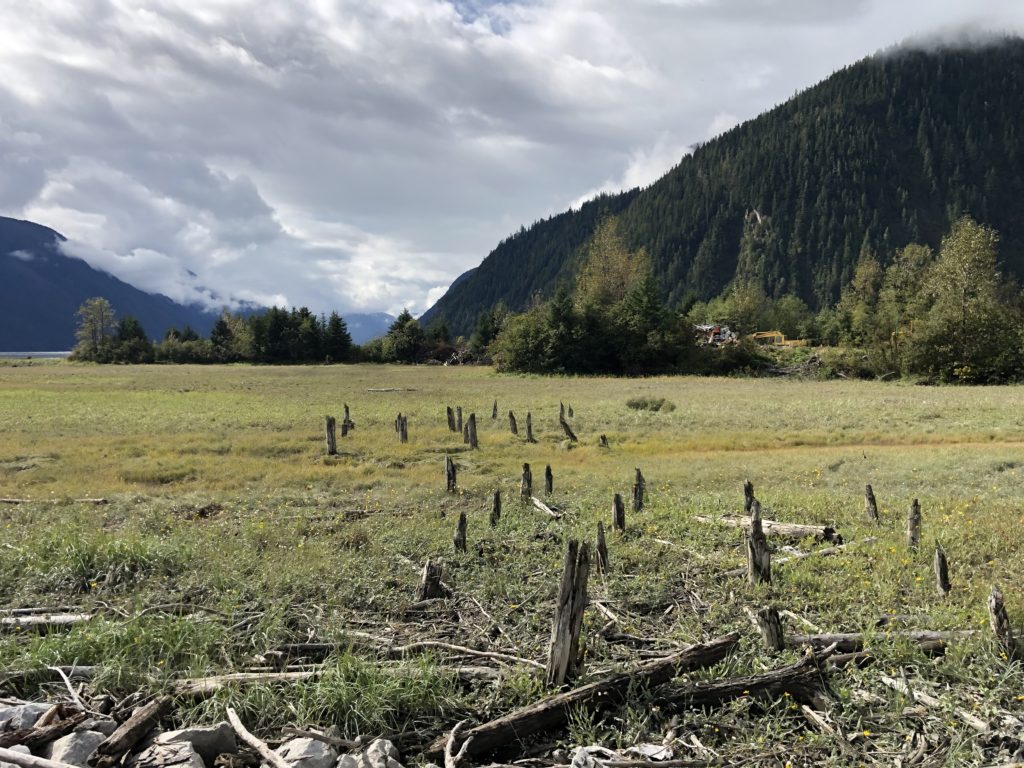
Instead of cooking dinner our first night, we decided to try out The Bus, based on Larry’s recommendation. It seems like wherever we go, Larry has been there and can give us a great place to visit or somewhere great for dinner. The Bus no longer had Larry’s recommended halibut tacos on their menu, but we did enjoy the halibut fish and chips. One of the best on the trip. This restaurant is a funky school bus that has been changed over into a kitchen. I won’t say that it was remodeled because it really is a dive, but a good dive! The wife does the cooking and the husband and son supply the fish. We sat outside at one of the picnic tables, but they also said they had inside seating in the barn. When we got there, we saw a handwritten sign saying the only thing left on the menu was 6 servings of fish and chips and 4 servings of halibut burgers. By the time we got our meals, probably before 6:30, they had run out of food and were closing for the day. Closing time is 8 or whenever they run out of food! It was good food so glad we saw the small sign for The Bus since it is off of the main street. The second day at Stewart and Hyder did not turn out like planned. We thought we would get up very early to visit Fish Creek, but my back hurt so we slept in. It was not a good time to sleep in, because we heard there were quite a few grizzlies at Fish Creek early in the morning. Later in the day we set out for Salmon Glacier but I could not take the bouncy roads, nor the steep cliffs. We went back to the Wildlife Center, but still did not see any bears. We did find the grocery store with the carts on the roof that I needed for the photo contest. We also saw a couple of very nice 57 Chevy’s. I was surprised to see them in this small, remote town in British Columbia.
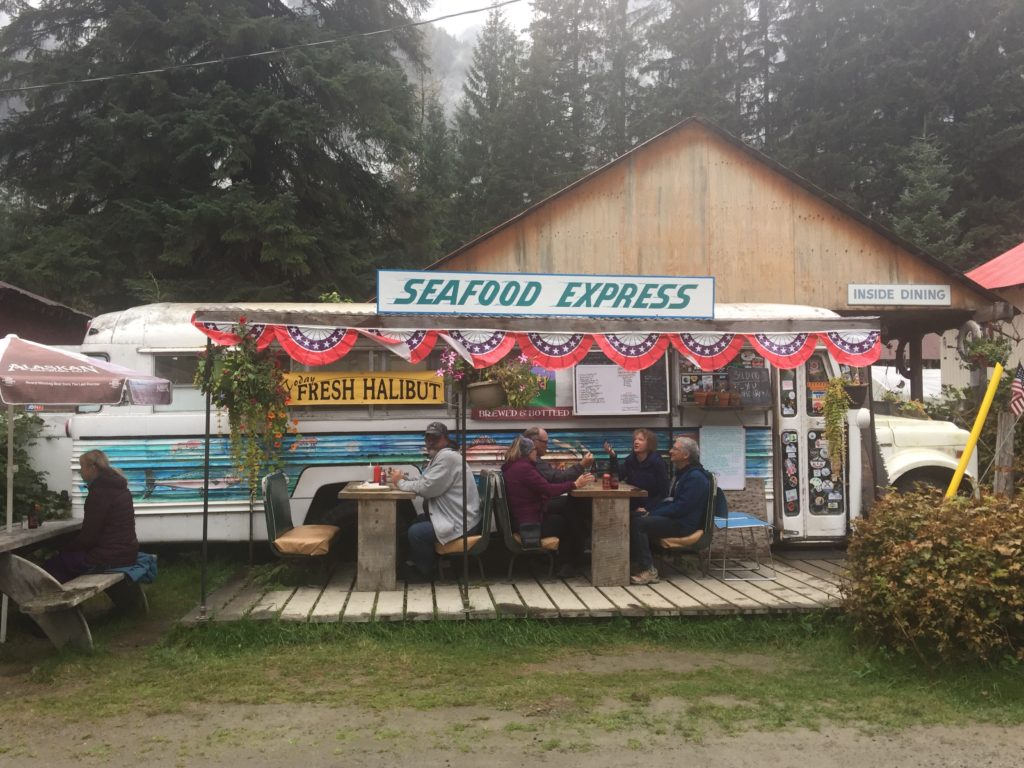
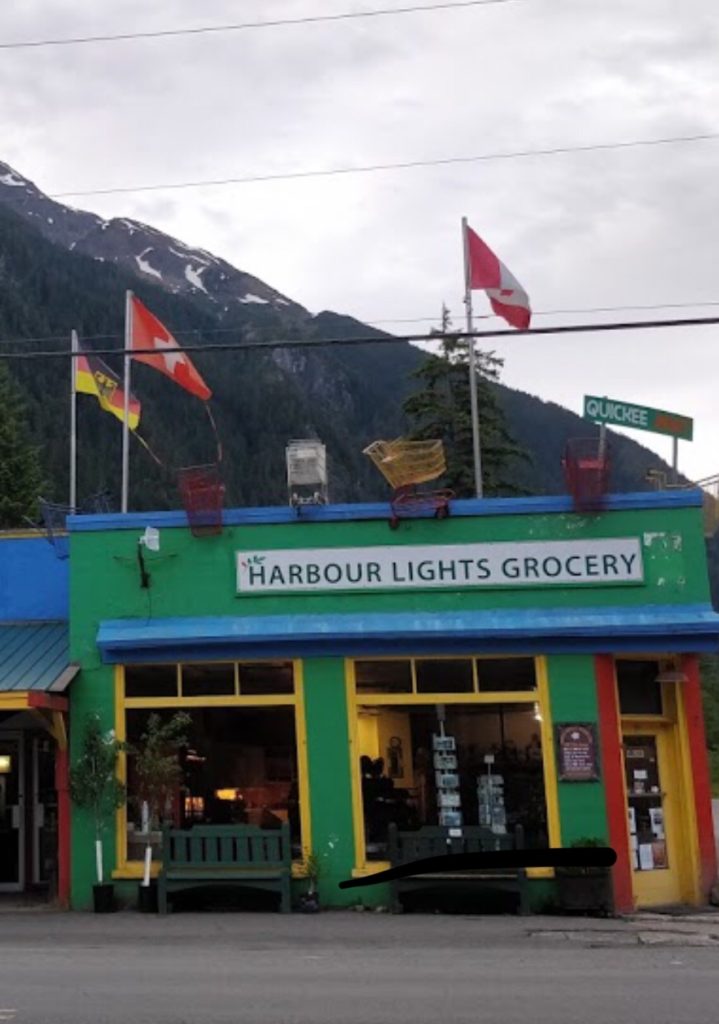
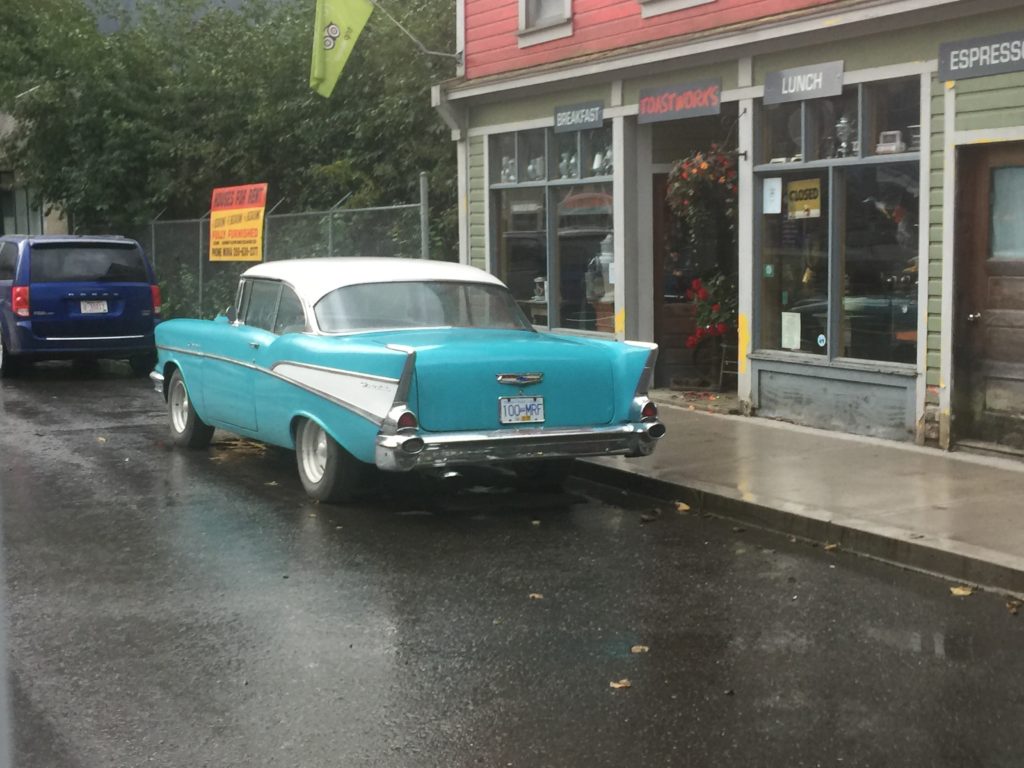
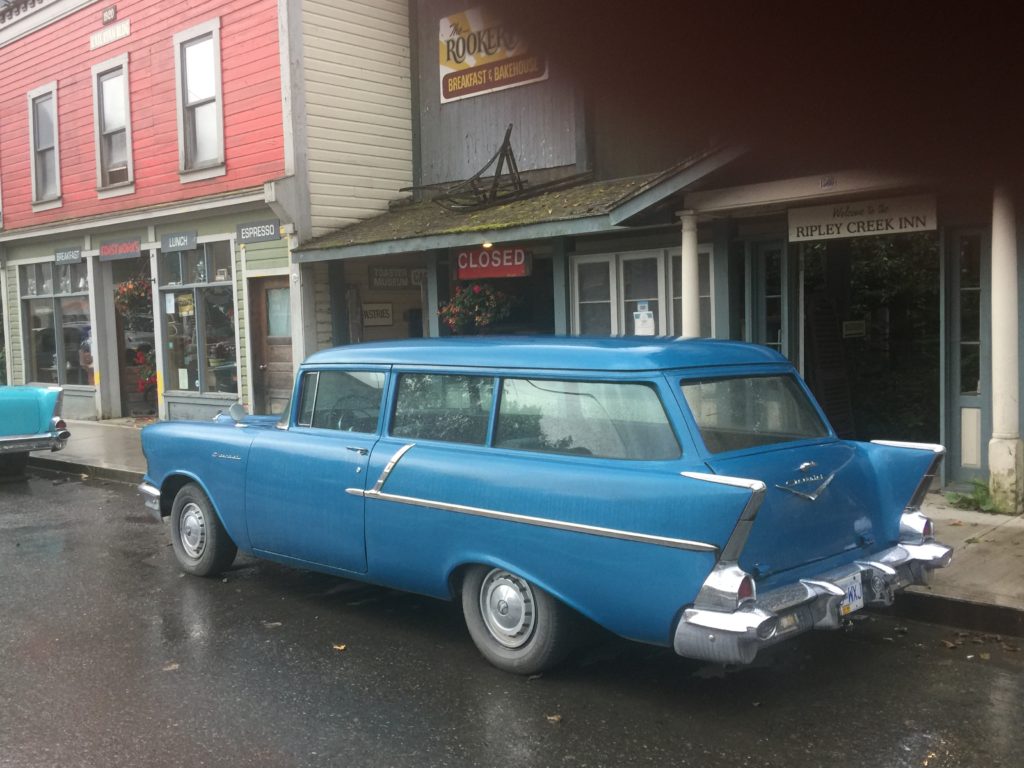
On our last night in Stewart we enjoyed a chili cook-off. Nancy won first place using Sandy’s recipe. Sandy had planned to cook the chili but they did not join in Stewart. Instead, Sandy and Ben headed to the US to find a dentist to fix Sandy’s broken bridge on her front teeth. I don’t remember who took second, but Gil’s chili took third place. It was my favorite. Everyone had a slightly different version of chili. The one Peaches made even used spaghetti noodles to go with the chili.
